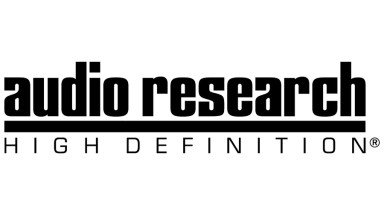
Musical Fidelity high fidelity equipments
London  United Kingdom
United Kingdom
Musical Fidelity is a renowned British manufacturer of high-end audio equipment, primarily recognized for its extensive range of amplifiers, including power, phono, headphone, integrated, and pre-amplifiers. In recent years, they have expanded into producing music streaming devices, all-in-one systems, and other audio accessories like headphones, Digital-Analog Converters (DACs), CD players, and Bluetooth receivers. The company, founded in 1982, stands out for its innovative industrial design, use of Nuvistor tubes, and commitment to Class-AB amplifier technology.
Origins and Founding
Musical Fidelity was established in 1982 by Antony Michaelson, a skilled clarinetist and Hi-Fi aficionado. Michaelson, after leaving Michaelson & Austin (an earlier venture he co-founded), sought to develop audio equipment that addressed his growing concerns with the available technology of the time.
The company's first creation, aptly named "The Preamp," integrated moving coil and moving magnet pre-amplification with a single line-level "Tuner" input. This initial product was developed as a response to Michaelson's dissatisfaction with the Michaelson & Austin TVP-1 pre-amplifier. The first units of "The Preamp" were handmade by Michaelson himself at his kitchen table and quickly sold out through a local dealer, who then requested more—a moment that pushed Michaelson to commit fully to audio production.
Key Milestones and Innovations
Following the success of The Preamp, the company introduced the powerful Dr Thomas amplifier, designed by Dr. Martin Vaughan Thomas, which delivered over 100 watts of output. Subsequent releases included the Preamp II and Typhoon Power amplifier, each contributing to the brand’s reputation for quality and innovation in the Hi-Fi community.
Under Michaelson's direction, Musical Fidelity continued to produce a wide variety of unique audio equipment using diverse circuit designs and advanced technologies. Many of these products went on to become significant milestones within the high-fidelity audio industry, solidifying the brand’s position as a leader in quality and performance.
Musical Fidelity equipments catalog
Musical Fidelity’s reputation grew with the A1 integrated amplifier, a Class AB amplifier rated at 25W per channel. The amplifier's unique bias level and case design, however, led to high heat output, often causing failures in both mains transformers and the (85°C rated) electrolytic capacitors. Despite these issues, its sound was praised as “a very sweet, authentic sound, reminiscent of tube amplifiers,” and the A1, launched in 1985, sold over 100,000 units over its lifetime.
In 1986, Musical Fidelity released the A370 power amplifier, a unique rack-mountable domestic amplifier that produced 185 watts per channel, making it one of the first of its kind from a UK Hi-Fi company. The MC series of speakers, designed by Martin Colloms, and the Reference series with 'TPX' polypropylene drivers, soon followed, receiving wide acclaim. The company continued to innovate in 1987 with the launch of the Digilog, one of the earliest standalone production DACs on the market, contributing to the digital audio revolution.
Expanding its line of amplifiers in the late 1980s, Musical Fidelity introduced models such as the P170 and higher-powered, rack-mounted amplifiers like the P270 and A370, which used Hitachi lateral MOSFETs, as well as the SA470 and SA570. The P180, introduced in the early 1990s, came with a Choke Regulated Power Supply (CRPS), marking a pioneering use of bifilar wound coils in conjunction with transistor electronics. This technology significantly reduced EMF interference, enhancing the purity of audio output.
The 1992 release of the A1000 integrated amplifier marked another milestone. Initially available in Japan, this “super integrated” amplifier, combining Class AB amplification with a full suite of line-level inputs and producing 50W per channel, eventually garnered global acclaim. In 1997, the company debuted the X series, a lineup of compact cylindrical components like amplifiers, DACs, phono stages, tuners, and CD players. This lineup led to the XA series, which incorporated similar design and functionality.
With the 1997 introduction of the NuVista preamp, Musical Fidelity pioneered the use of Nuvistor tubes, miniature metal-ceramic vacuum tubes originally produced by RCA. This led to a line of products featuring these unique tubes, followed by amplifiers, DACs, and the Tri-Vista 21 “Super DAC” in 2002. The NuVista 800 emerged as the latest iteration, blending tradition with advanced audio technology.
The launch of the kW series in 2003 marked the arrival of one of the most powerful amplifiers from a UK Hi-Fi manufacturer. Capable of delivering 1 kW of power per channel into 8 ohms, the amplifier and its two mono-blocs with power supply weighed a remarkable 129 kg. An upgraded version, the Titan, succeeded the kW series.
In 2015, Musical Fidelity introduced the Merlin, a versatile music system that included a turntable, wireless streaming, and speakers, enabling both vinyl playback and high-quality digital music streaming via apt-X Bluetooth in a compact design.
By 2018, Musical Fidelity’s catalog included the Nu-Vista, M8, M6, M5si, M3, MX, LX2, and V90 series, as well as the Encore streaming music servers. Each series offers a range of products, from phono stages and integrated amplifiers to DACs, CD players, and headphone amplifiers. The Nu-Vista series continues Musical Fidelity’s legacy of combining Nuvistor tubes with transistors and digital technology, staying true to the brand’s dedication to innovation and high-quality sound.











